If a sports hall is on the front page, it is almost certain that some serious tragedy has taken place. This is well illustrated by the fact that the handover of the Budapest Sports Hall on 12 February 1982 did not make headlines, but unfortunately in December 1999, it did. "The Budapest Sports Hall has burned down" - it was on the front page of almost every newspaper at the end of 1999. The sports facility, which had been operating for barely 18 years, had been the site of many outstanding events, but today we can hardly hear about it. The younger generations, the 20-year-olds, may not even know that such a building existed since the Papp László Sports Arena now stands on its former site. On the occasion of the anniversary of its handover, take a look at what Budapest has given to lovers of sports, culture and music in less than twenty years of the sports hall.
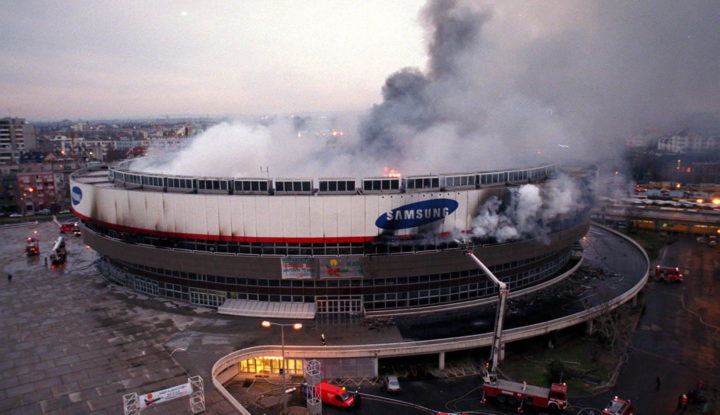
The ignited Budapest Sports Hall on 15 December 1999 (Photo: Tamás Kovács; Source: MTI/MTVA)
The first indoor sports facility in Hungary was the National Sports Hall (Gerevich Aladár National Sports Hall since 2010), which was completed in 1941. It was a narrower hall with fewer seats, so after the handover, it was stated that it would be good to have a sports hall with much more capacity in Budapest. Its location was designated in the late 1940s, where the People's Stadium (Népstadion) was built in 1953. And for a long time, the sports hall was just an idea.
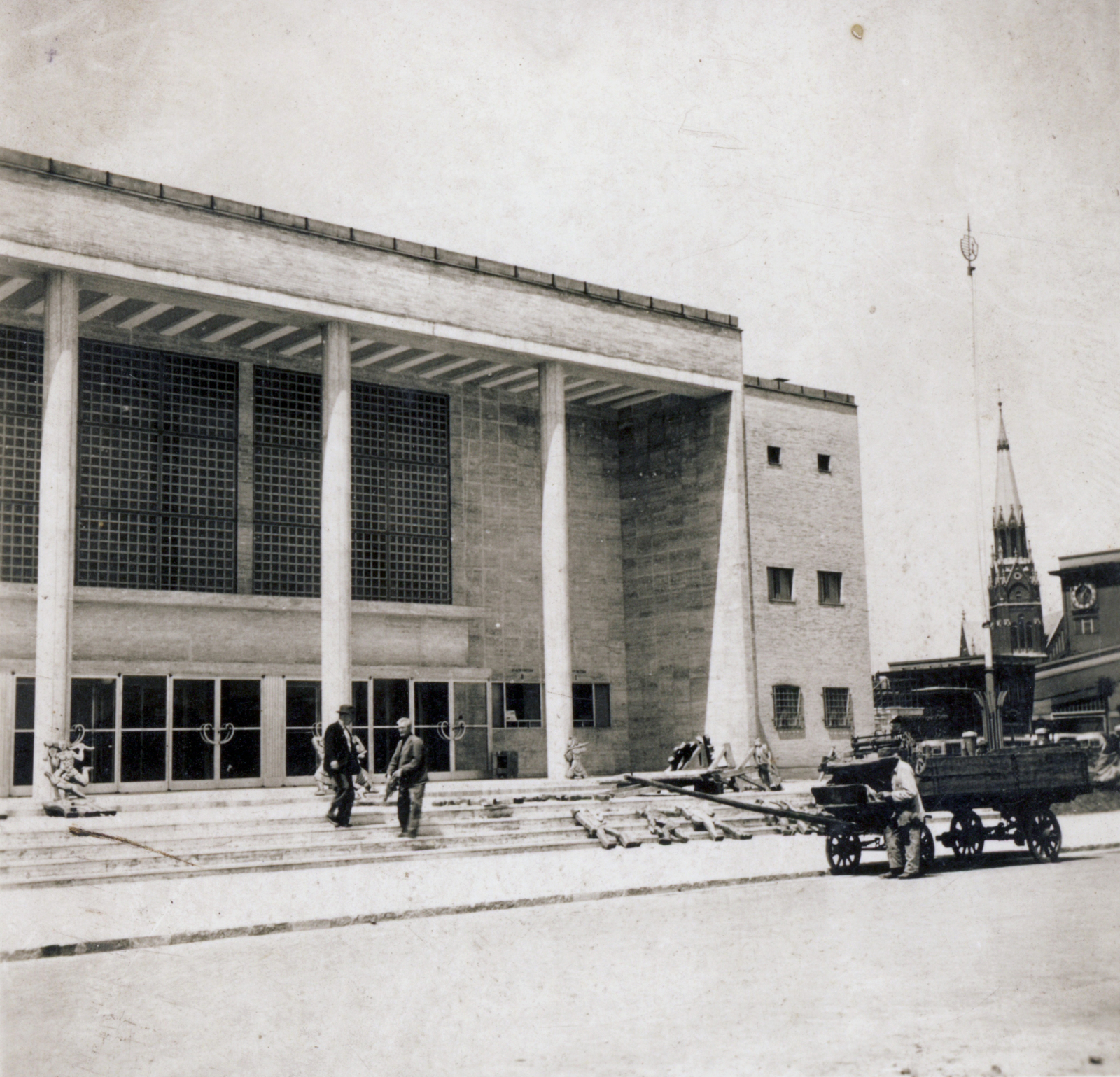
The National Sports Hall (3-5 Istvánmezei Road) In 1942 (today Geradich Aladár National Sports Hall) (Photo: Fortepan/No.: 115181)
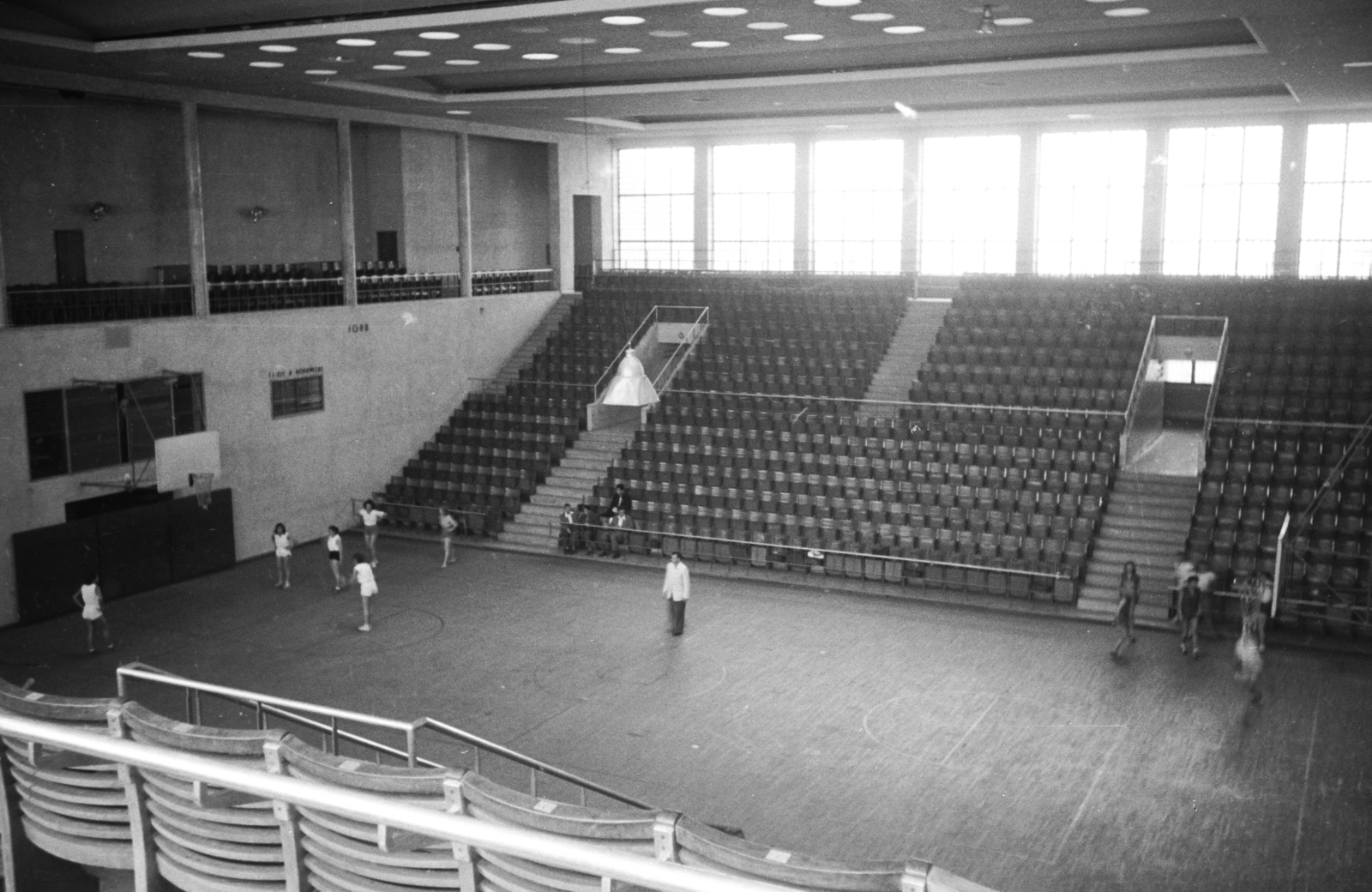
The narrow stands of the National Sports Hall in 1949 (Photo: Fortepan/No.: 33500)
Implementation had to wait until the 1970s when in 1973, the capital's leaders passed a decision to build a multifunctional hall. The following year, the commissioned engineers were sent on a study trip to the then Soviet Union to find the most suitable “prototype” hall that they could build at home. The committee eventually selected the Leningrad Jubilee Sports Palace as the perfect model, despite the fact that it was a smaller hall with a capacity of 7,000 people. Subsequently, the Hungarian and Soviet governments signed an agreement in Moscow to build the hall and, "of course", that Soviet companies must participate in the construction.
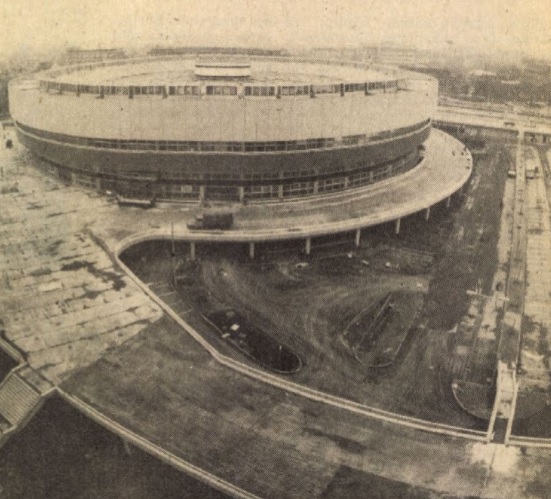
The surroundings of the Budapest Sports Hall are organised, 1981 (Source: Népszabadság, 24 December 1981)
The plans for the Budapest Sports Hall were reworked by an engineering team led by István Kiss, and a 12,500-seat hall was dreamed up. Work began on 1 March 1978, which, as is customary in the age, nearly twenty thousand people helped to build during more than 110,000 hours of “social work”. The technical handover of the sports hall was on 21 December 1981, and the facility was opened to the public on 12 February 1982.

The completed Budapest Sports Hall at the handover, photographed by Tamás Urbán (Photo: Fortepan/Nr.: 125170)
A number of awards were presented at the handover, followed by an aerial hoop practice of four hundred girls dazzling the audience, followed by singers and dancers, and handball players taking possession of the long-awaited facility. They had to wait barely two weeks for the first world record after the German sprinter Gesine Walther ran a world record of 60 metres in the GDR-Hungary athletics competition and Irén Orosz reached a national record.
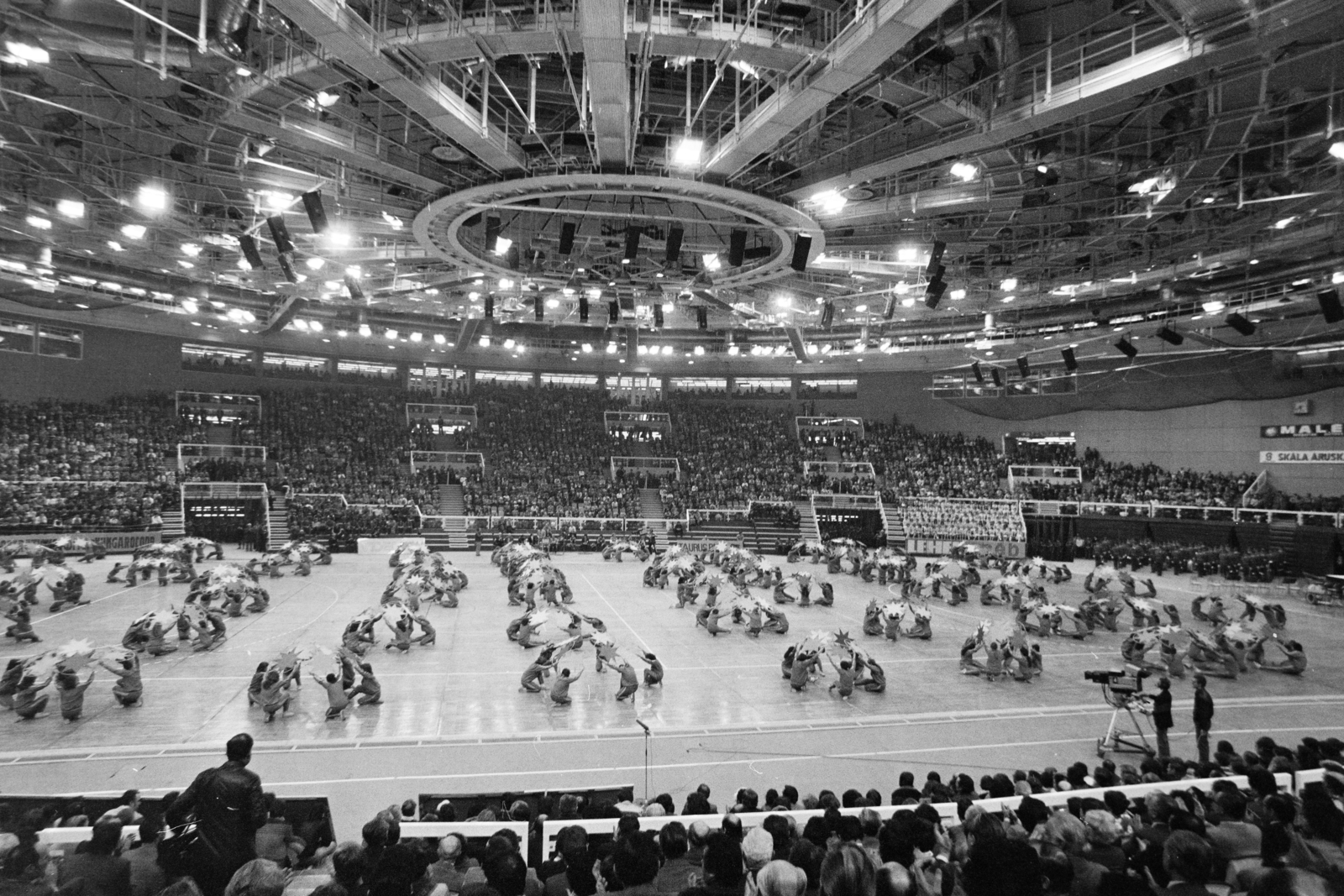
The handover ceremony on 12 February 1982 (Photo: Fortepan/Nr.: 212971)
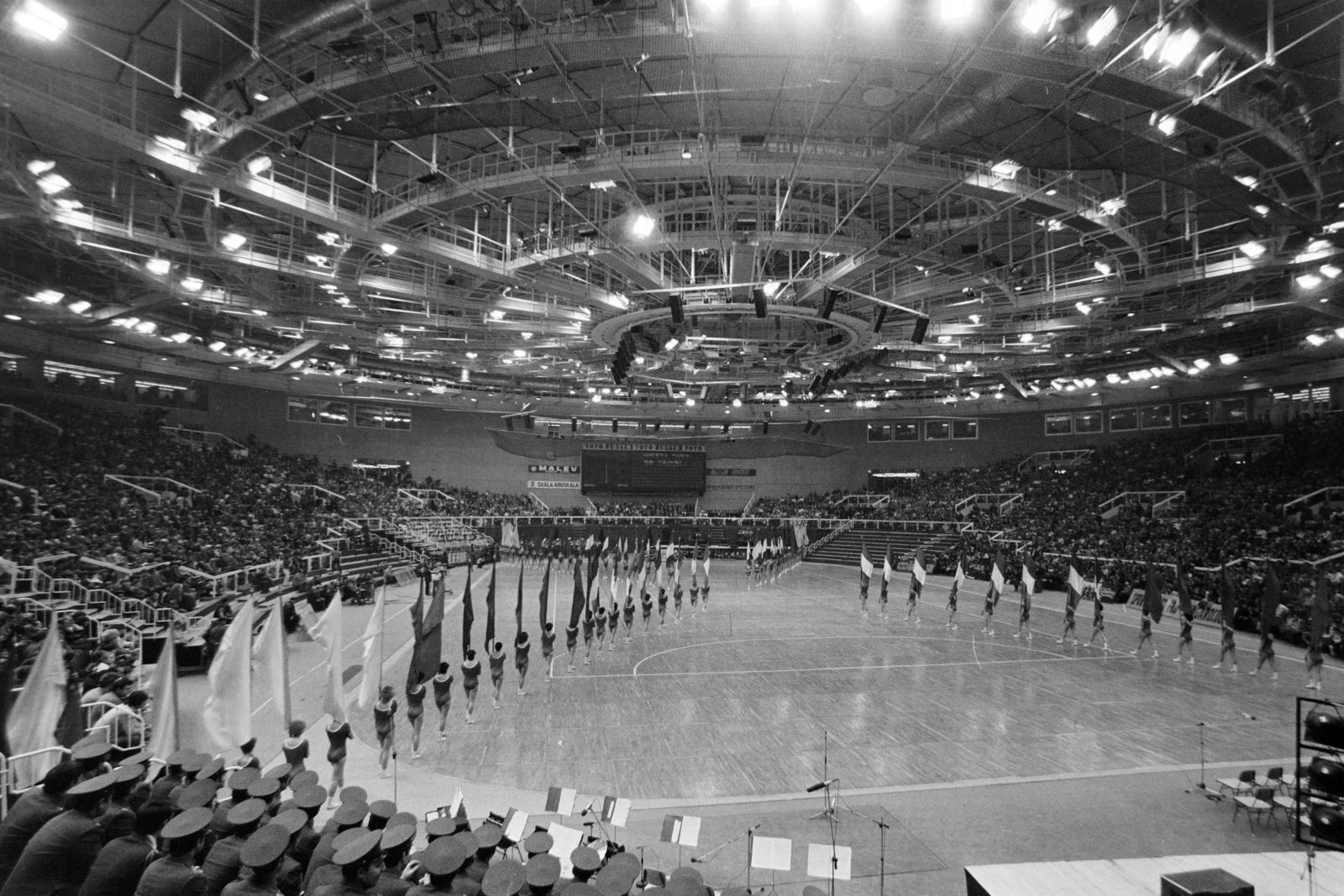
The handover ceremony on 12 February 1982 (Photo: Fortepan/Nr.: 212971)
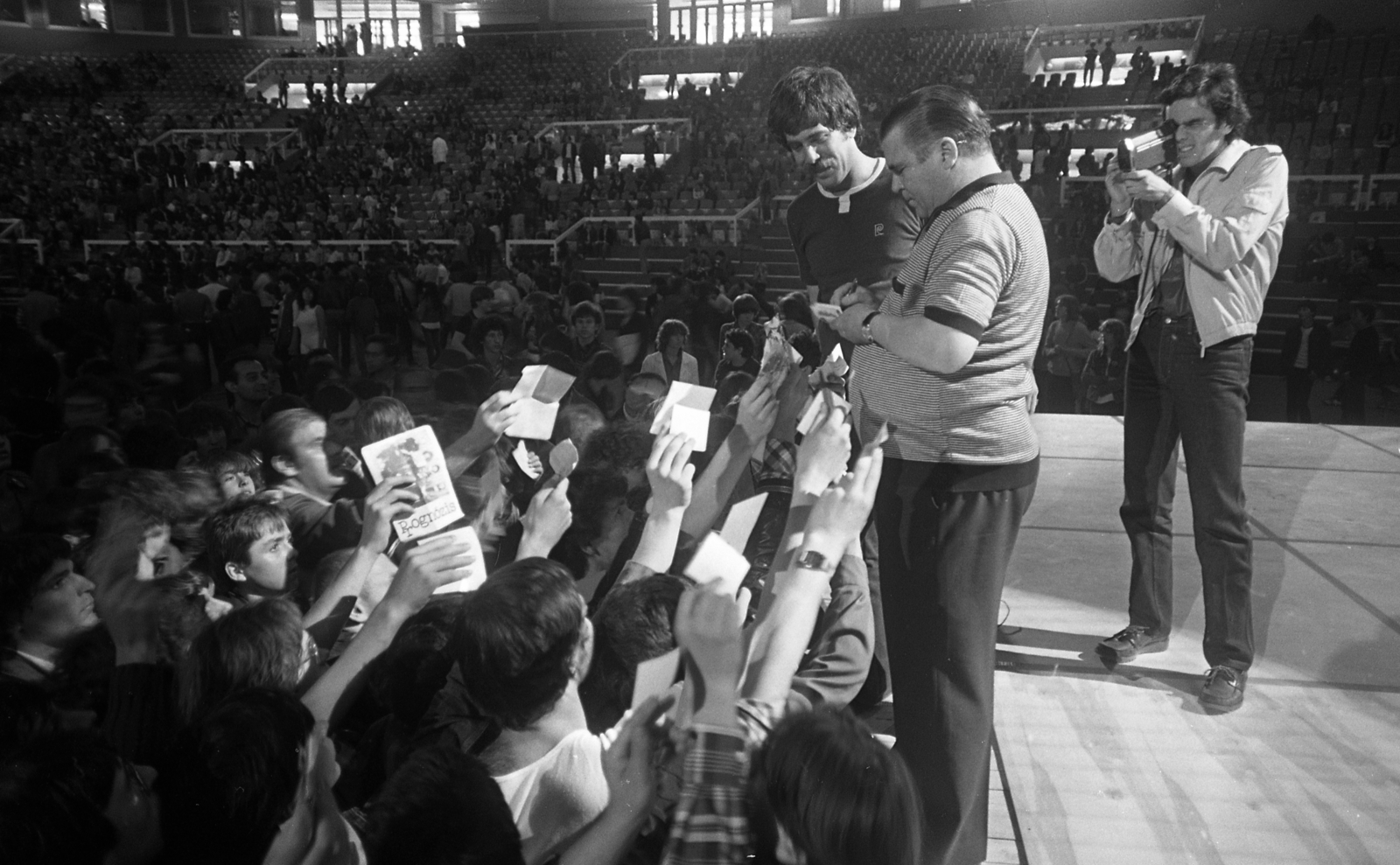
Ferenc Puskás signing autographs at the Budapest Sports Hall, next to him is reporter János Déri - photographed by Tamás Urbán (Photo: Fortepan/Nr.: 124823)
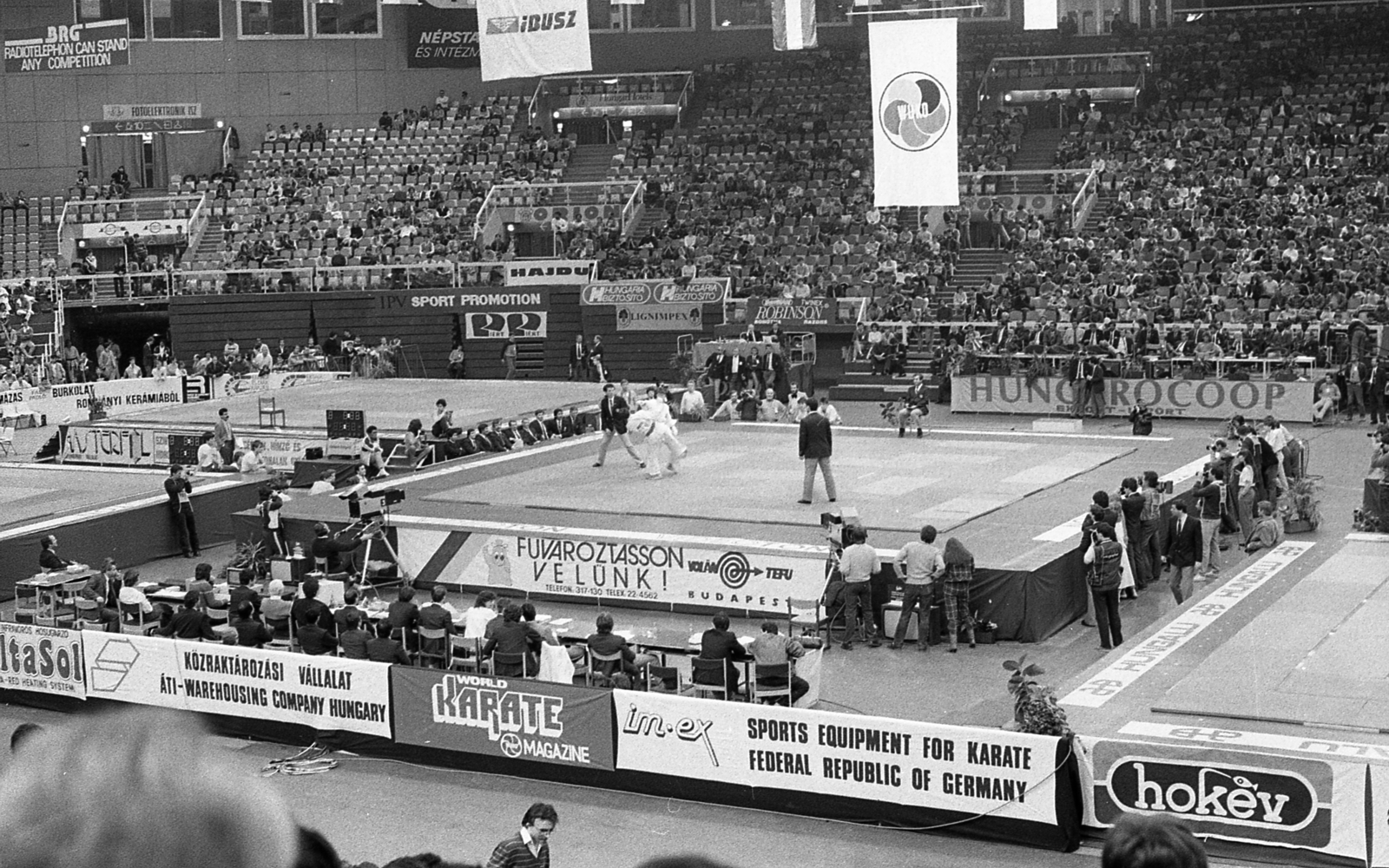
The 4th Ibusz-Oyama Karate Cup was held at the Budapest Sports Hall in 1988 (Photo: Fortepan/Nr.: 40347)
In addition to sporting events, the Sports Hall has also hosted a number of musical events, dance movements and huge concerts. The 1st Hungarian Dance House Meeting was held in the Sports Hall, but several films were also shot here. Opinions on BS were also very favourable in the music industry, so it is no coincidence that the biggest Hungarian bands and performers, such as Hungária, Omega, Edda, Piramis, Republic, Karthago, Bikini, R-GO, Neoton Familia, Hobo, Zsuzsa Koncz, Zorán, Ferenc Demjén and Ákos also performed here.
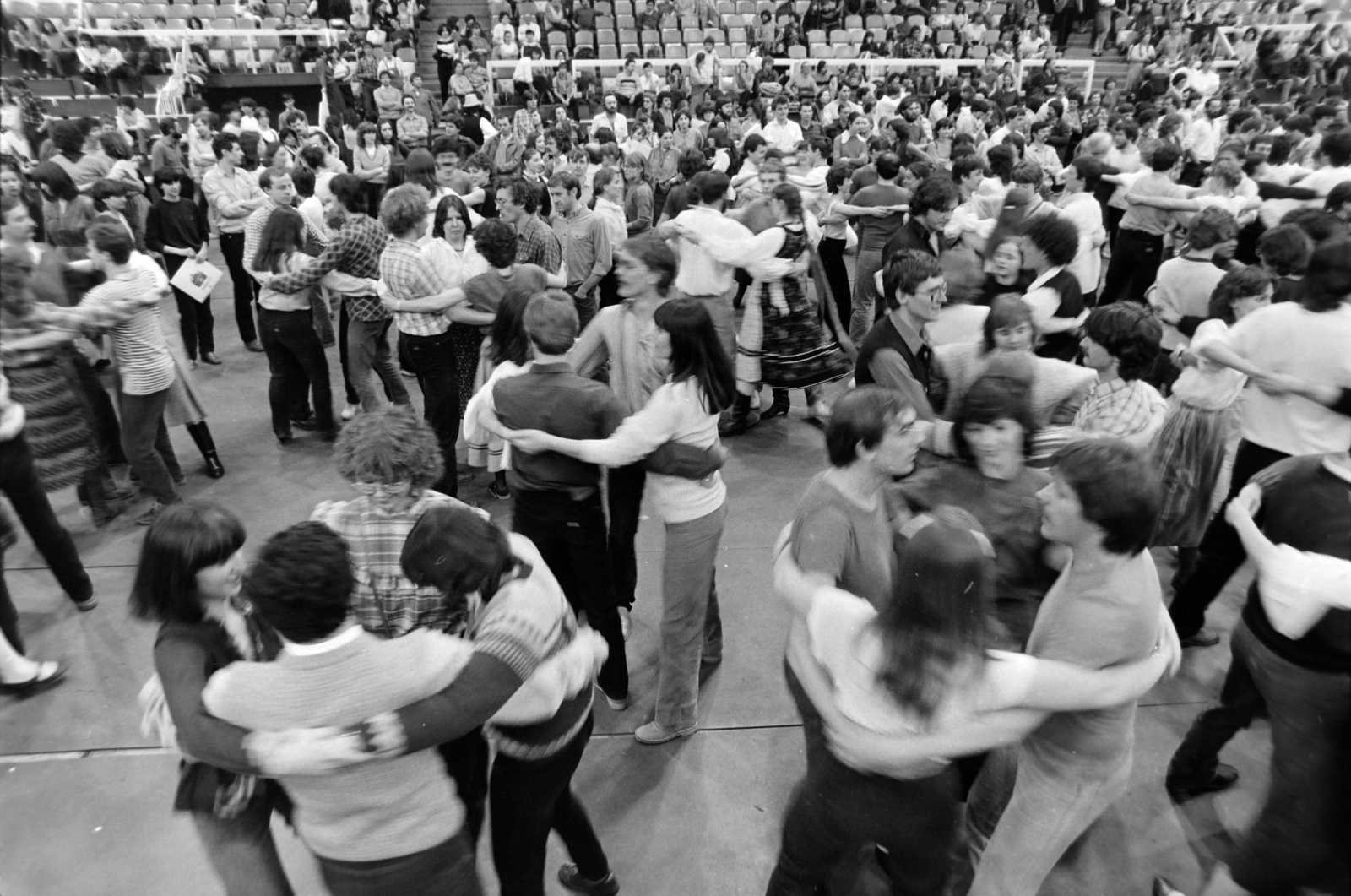
The 1st Hungarian Dance House Meeting was also here in 1982 (Photo: Fortepan/Nr.: 199060)

Live Aid for Africa, a two-day music concert on 26 and 28 December 1985, photo by Tamás Urbán (Photo: Fortepan/Nr.: 124470)
In addition to the performers in Hungary, many world stars gave concerts here, and due to their great popularity, there were several occasions where the concert had to be held in the parking lot of the Sports Hall. Such was the 1984 concert of Iron Maiden, which was reported in the 15 August 1984 issue of the Pesti Műsör: “Good news for the fans of the most metallic and toughest rock trend: One of the most popular English heavy metal rock bands, Iron Maiden, is coming to Budapest. Through the cooperation of the Sports Hall, they will come to us to give a concert on the stage to be set up in the parking lot of the Budapest Sports Hall on the evening of 17 August at 9 pm. The officials of the Sports Hall have decided in favour of the outdoor performance because it was already worked great at last year's R-GO concert, on the other hand, there are far more people can be outside than inside, and the renowned formation is expected to attract a lot of people.”
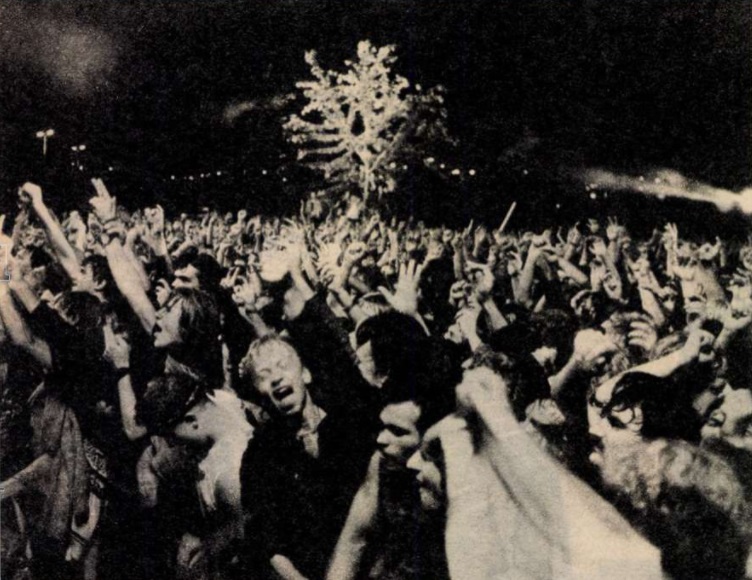
The concert held in the parking lot of the Budapest Sports Hall was very popular (Source: Új Tükör, 16 September 1984)
Without claiming to be exhaustive, stars such as Tina Turner, Johnny Cash, Elton John, Iron Maiden, Bonnie Tyler, Deep Purple, Cliff Richard, Depeche Mode, Santana, Scorpions, Aerosmith, Black Sabbath, Joe Cocker, Green Day, The Prodigy, Gipsy Kings, Metallica, but also opera singer Pavarotti and José Carreras have performed here.
On 15 December 1999, the Budapest Sports Hall, which housed countless great sporting events and concerts, became prey to the flames in less than three hours. The fire was probably caused by one of the burning candles at the Christmas market in the arena.
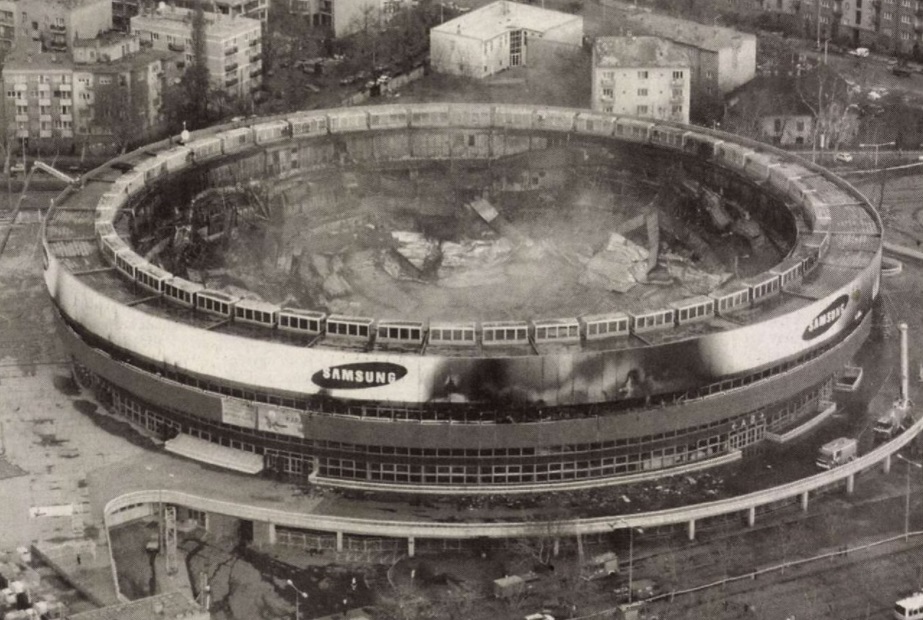
The burnt-out sports hall at the end of 1999 (Source: Magyar Nemzet, 16 December 1999)
After the structure of the building suffered such severe damage that it was not possible to restore it, it was demolished and another Arena was planned in its place. This later became the Papp László Sports Arena, which was handed over in 2003 to the delight of the people of Budapest.
Cover photo: The Budapest Sports Hall in 1985 (Photo: Fortepan/Nr.: 194685)

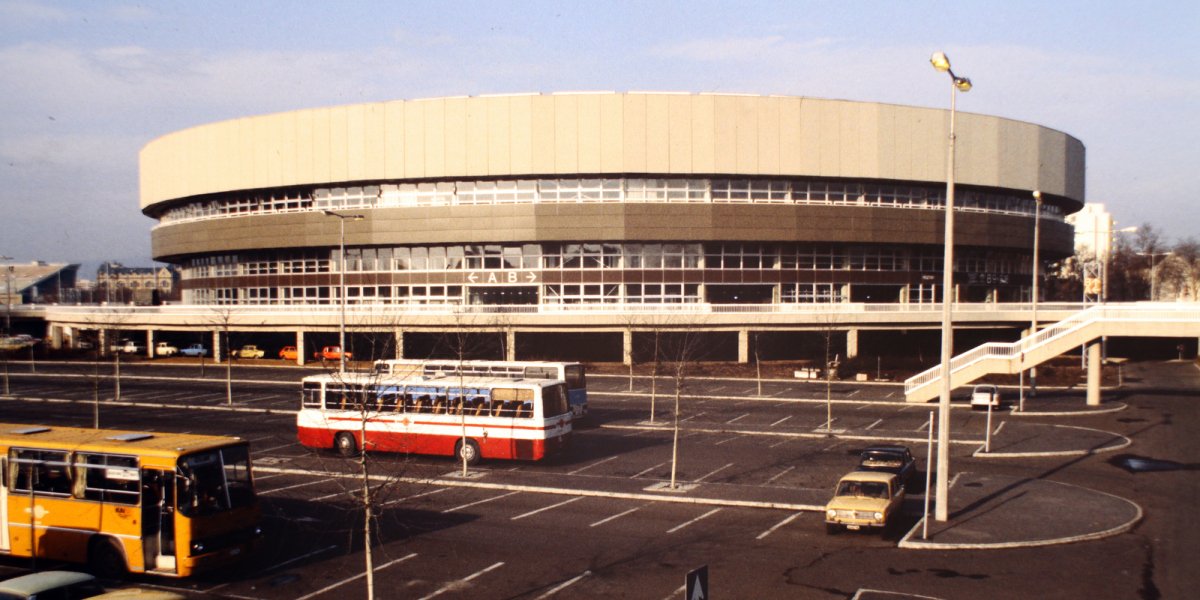


































Hozzászólások
Log in or register to comment!
Login Registration